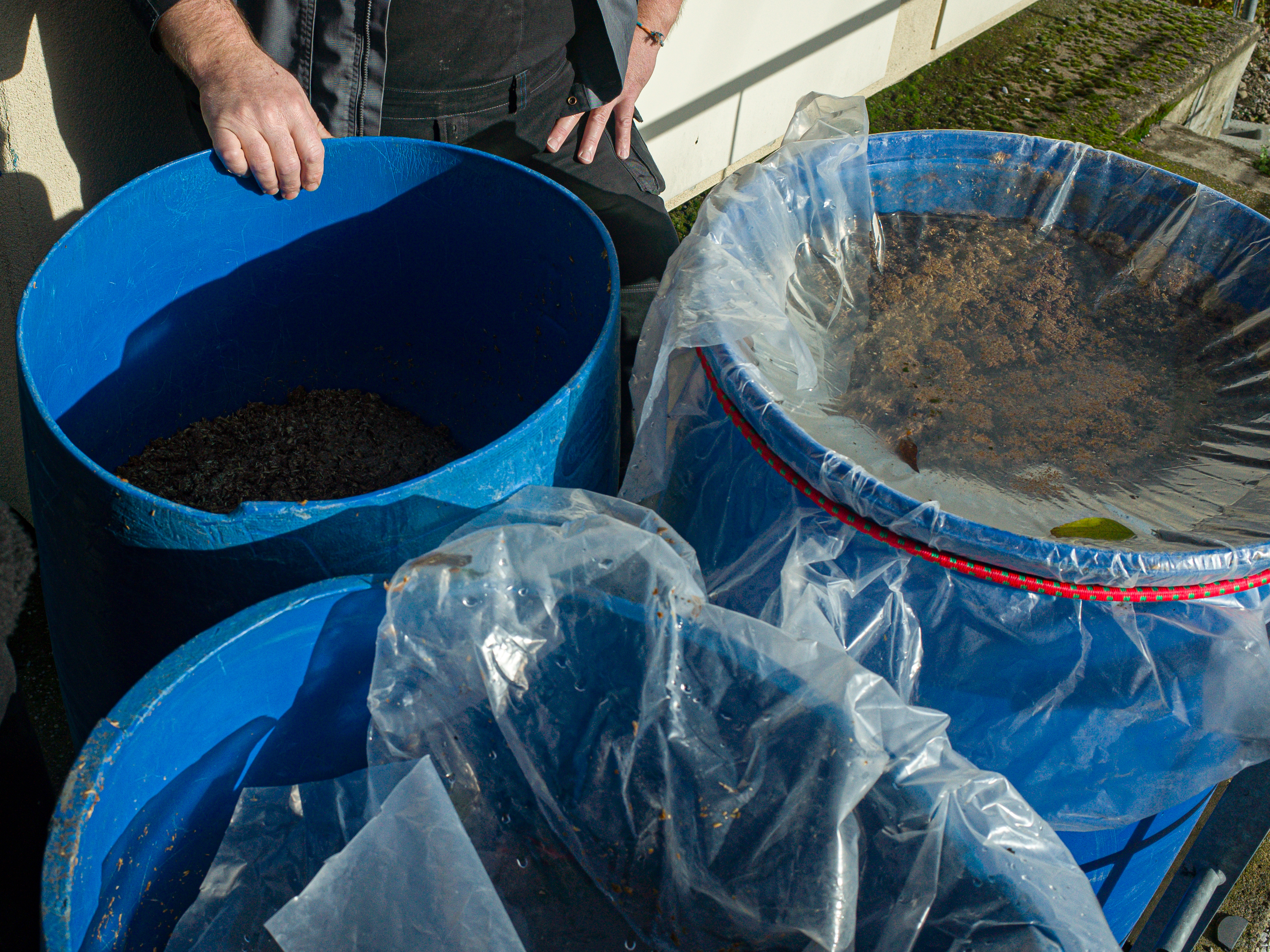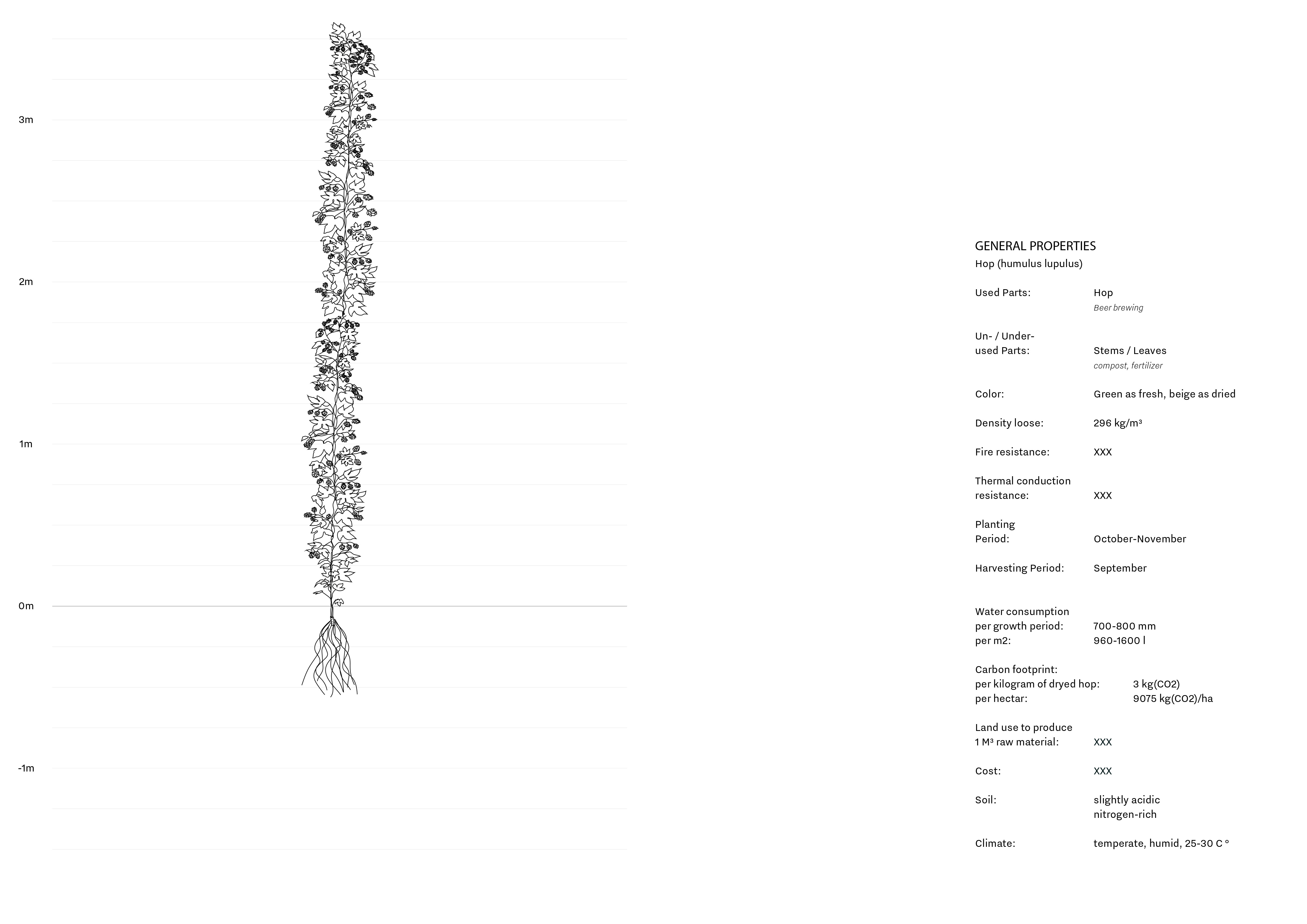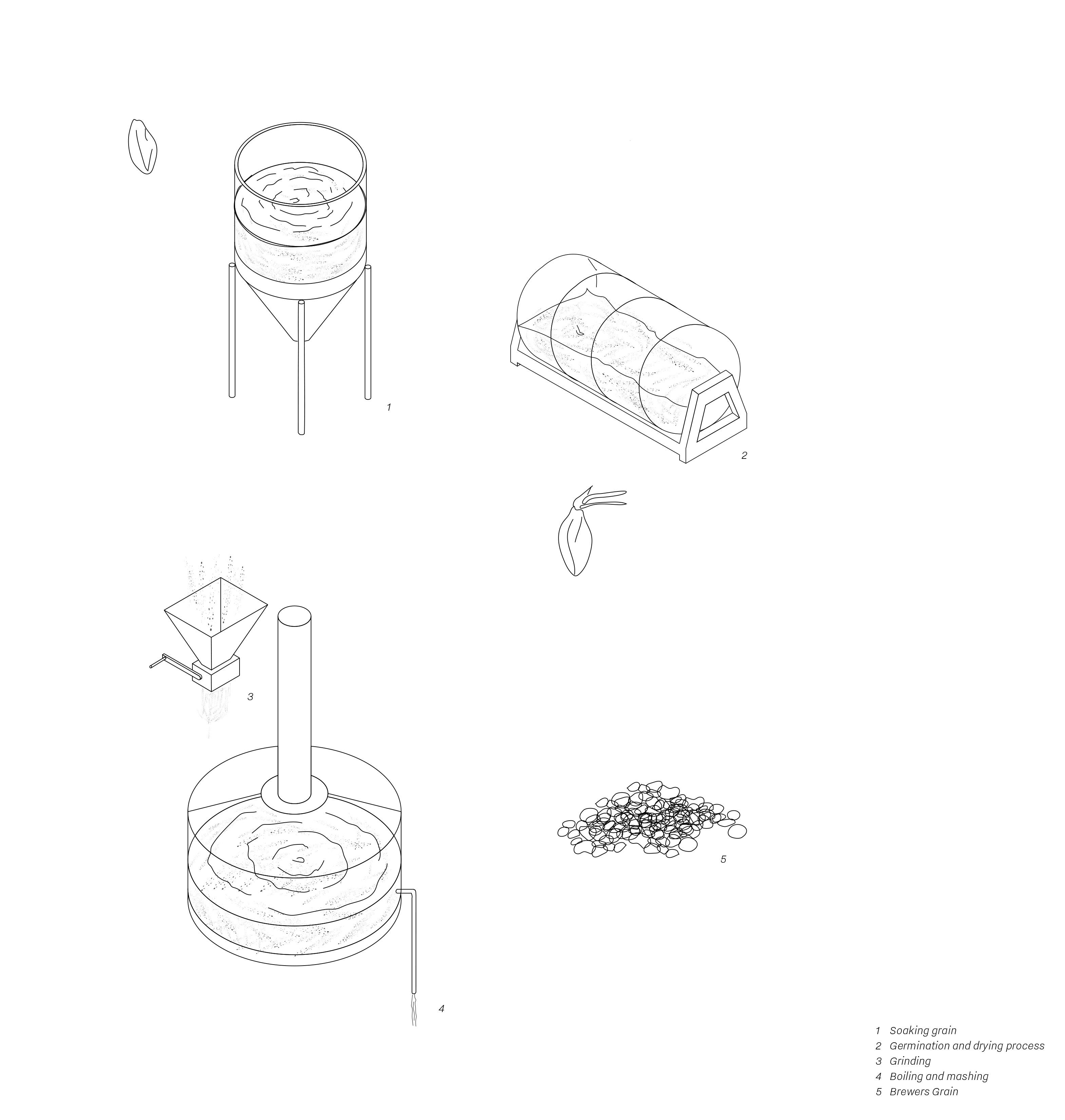Hop
The beer industry in Belgium is huge, there are about 430 breweries in the country, and about 80-100 of them in Wallonia. There are four main ingredients needed in beer production: water, yeast, malt, and hops. Not all hops that are used in the breweries are grown in Belgium, but there are 181 ha of hop fields altogether in the country, most of which in Flanders. In the vicinity of our site, there are 7 ha of hop fields and 8 breweries within a 50 km radius, Chimay being the biggest of them. Hop is a climbing plant that can grow to heights ranging from 10 to 18 meters. Despite its impressive length, once the cones are harvested, everything else is discarded, often treated as organic waste: it is either composted, spread in the fields, or simply burned. As the vines of the hop plant were considered waste products in the beer industry, we took a closer look at other by-products they produce. During our investigation, another by-product caught our interest: Brewer‘s grain. This consists of the solid materials left after the initial boiling process of beer. This leftover product is partially utilized for animal food and as fertilizer. While brewer‘s grain isn‘t a byproduct of the hop plant, its relevance to this chapter is highlighted by the fact that hops, which are also a byproduct of beer production, share a connection.












